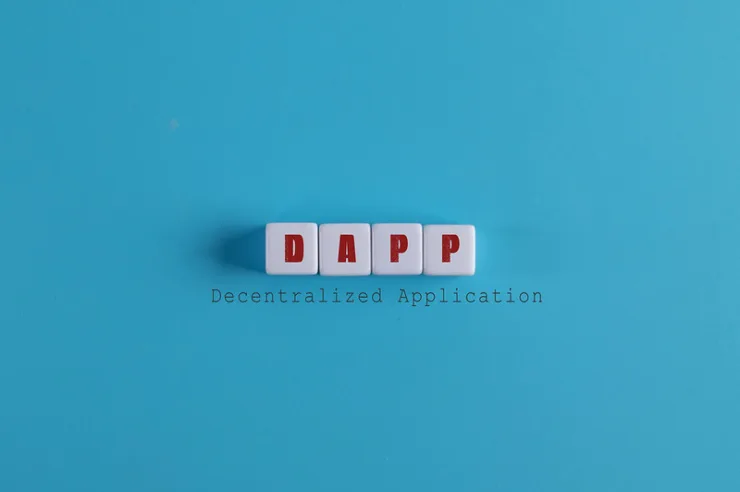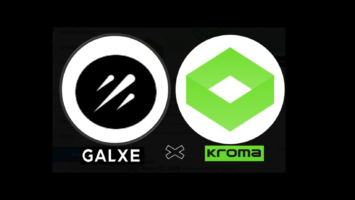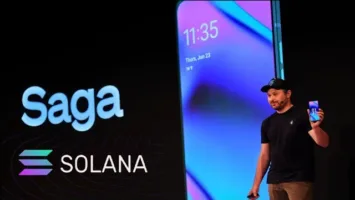Decentralised Applications have become an important weapon in the world of finance and technological fields. With the help of technological fields these innovative apps give the consumers a new level of privacy, honesty, and independence. In this investigation we are going to examine the basic ideas, features, and effects of dApps on several industries.
This introduction tries to provide you with complete knowledge of the exciting world of decentralized applications and their ability to completely change the digital environment. In this world your level of experience with blockchain technology does not matter.
Decentralized Applications
A decentralized application, or dApp in simple, is a kind of software program that works on a decentralized network or blockchain. They do not depend on any central authority or agent, unlike other traditional programs that are typically managed by an individual. To provide a number of advantages to consumers, such as improved safety, transparency, and independence they use blockchain technology.
One of its main features of dApps is that it allows anyone to view and modify their code. Users are more likely to trust the application because of its transparency. Decentralized apps commonly feature smart contracts written directly into their code in their conditions. In executing processes and transactions, smart contracts reduce the need of agents and give guarantees that agreements will be carried out honestly and completely.
DApps offer multiple applications, such as supply chain management, gaming, cryptocurrency, and financial services. They have the power to change current markets and give new, innovative solutions to ongoing problems. We are going to explore the workings of these applications as well as their major effects for many different sectors. After this we go further into the world of decentralized apps.
How dApps Operate
On blockchain networks a distributed ledger system works on the basic development of dApps to ensure that operations and transactions take place in a safe, decentralized way without depending on a central authority by using blockchain technology.Smart contracts designed that actively execute and follow out the terms if specified requirements satisfy are known as self-executing contracts. Smart contracts allow parties to communicate directly. It reduces the risk of human error and fraud.
Like with regular apps, users communicate with dApps using displays. Through web browsers or special interfaces that connect them to the blockchain where the dApp is running, they can access these applications. Given the goal of the dApp, users can trade assets, take part in decentralized finance operations, play games, or access a variety of services, among other things. The main distinction is that these operations take place in a decentralized setting where blockchain technology offers security and transparency.
These mechanisms place the foundation for the operation of dApps by being integrated into the blockchain. Protocols validate and identify the transactions. Proof of Work (PoW) and Proof of Stake (PoS) are examples of protocols. It provides understanding between web participants, which improves the integrity and security of the blockchain. Some dApps features as wel allow users to take part in the development processes of the programme, and create a more fair and driven community environment.
Differences Decentralized and Traditional Apps
Trust and Transparency:
Decentralized Apps is the basic technology of blockchain that builds trust. dim trust is less required because every activity and transaction on the web is simple and verifiable by everyone on the network.
Traditional Apps belief in traditional apps relies on the telephone exchange authority or the honesty and authority of the application developer. Users need to have faith that the app is not using their information or dynamic rules.
Immutability:
Decentralized Apps the immutability of data on a blockchain makes sure that records and transactions cannot be easily changed, up the application’s validity.
Traditional Apps the app maker or a central authorization may change or remove information and information in orthodox apps, leadership to hacking or governmental control.
Centralization vs. Decentralization:
Decentralized Apps on the strange hand, blockchain technology powers dApps, and they operate in a decentralized manner.. They improve safety and dependableness by doing away with a single point of control and operate on a straggly network of computers.
Traditional software is organized in a way that requires a one server or authority to operate. They may turn more open to restrictions, hacking of data, I points of failure, and to a lesser extent user freedom as a result of this central point of control.
Ownership and Control:
Decentralized Apps users have more ownership and control on their data and digital property by victimization dApps. Users have a greater undefined control of their information when they connect directly with the blockchain.
Traditional apps commonly fall below the app developers or suppliers of services, which also have control and possession of report information and data. Users bet on these organizations to protect their data because they have little authority on it.
Interoperability:
Decentralized Apps can interact with smart contracts and other DApps on the same blockchain, making them more accessible by design. This is able to support teamwork and seamless connection and result in a more combined integer world.
In traditional apps The mobility and tractability is restricted because they frequently exist in stray environments which make it difficult to communicate and share information to strange apps or services.
Benefits of Decentralized Apps
Transparency:
People know dApps for their transparency. The blockchain verifies and makes every transaction and patch of information accessible to the public. This transparency increases users’ bank and reduces the need for dim faith in agents or unusual parties.
Global Accessibility:

Everyone with a cyberspace connection can utilize dApps, It has an easier experience to access and global. Populates who used to be locked come out of the closet of orthodox financial and technology systems nowadays have the power to use and apply financial services, applications, and options.
Censorship Resistance:
Decentralized applications resist outside verification and censorship. Their independence from centralized authority, governments, or companies leaves them to a lesser extent at risk of disruption. dApps has a useful instrumentate for promoting the freedom of speech, unmodified access, and opposition to censorship by the government.
Security:
Decentralized apps are better than standard apps when it comes to security. They use cryptographic principles to secure their data and transactions. It is more tolerant which increases their defense against fraud, hacking, and unauthorized access.
Ricks of Decentralized Apps
A specific aspect of the relationship between dApp and blockchain presents important opportunities for digital transformation. But it’s too important to be wary of possible cons with localized applications. Here are a few significant fears that you should be aware of when it comes to localized applications.
Network Congestion:
Network congestion has a problem that it becomes clearly visible when a single dApp uses a great proportion of processing power. The Ethereum network can only handle ten to fifteen transactions per second. It can cause the number of unconfirmed transactions to grow faster.
Performance Overhead:
Significant performance overhead and scalability issues are the next major danger related to dApp examples. To maintain the correct levels of security, dependability, integrity, and transparency in a dApp, each node in the network must execute and record every transaction. As a result, dApp overhead is far higher than that of traditional processing.
User Experience:
Creating engineering experiences is the One larger challenge for decentralized apps is the challenge of being easy to use. Setting up a tool set for safe blockchain engagement would be challenging for the typical end-user.
Centralization:
A decentralized application has certain centralized characteristics if it appears to be an Ethereum-based solution. For example many decentralized applications keep private information on the server side or use centralized servers to carry out critical company logic.
Maintenance:
a number of the challenges of changing code and data shown on the blockchain network, decentralized applications offer many maintenance-related challenges. Even if developers found problems or threats to security, they were unable to release updates for the programmes.
Final thoughts:
Understanding Decentralised Applications (dApps) in the wider scheme of technology is an adventure into a digital environment that is more user-friendly, clear, and safe. dApps, which are based on blockchain technology, change the established system offering decentralized control, greater trust, and limitless possibilities. The potential of decentralized apps (dApps) to transform industries and interact people with technology. It is becoming more and more apparent as we look further into this modern world.




Comments (No)